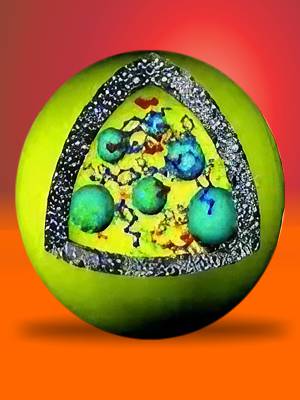Part of a series of articles for National Chemistry Week 2023 on
Unveiling the Surprising Healing Power of Chemistry
Microencapsulation for Drug Delivery
Microencapsulation represents a cutting-edge application of chemistry in drug delivery, offering an unexpected and highly effective means of administering medications. This innovative technique involves encapsulating drugs within tiny, biocompatible microspheres or capsules, and it has revolutionized the way drugs are administered and released in the body.
The chemistry behind microencapsulation revolves around the selection of suitable polymers and the precise control of particle size and drug content within the microspheres. Various polymers, such as poly(lactic-co-glycolic acid) (PLGA), gelatin, or alginate, are chosen based on their compatibility with the drug, desired release kinetics, and biocompatibility. The chemistry of polymer selection ensures that the encapsulated drug remains stable and protected until it reaches its target.
One of the key advantages of microencapsulation is its ability to provide controlled and sustained drug release. The chemistry involved in designing microspheres allows for the modulation of release rates, ensuring that patients receive the right dose at the right time. This is particularly valuable for medications that require continuous administration or for drugs with a narrow therapeutic window.
The encapsulation process itself relies on various chemical techniques, including emulsion, spray drying, and solvent evaporation. These methods encapsulate drugs in a protective shell, preserving their chemical stability and enhancing their bioavailability. This chemistry-driven encapsulation process ensures that the drug remains intact during transit through the digestive system or while circulating in the bloodstream.
Furthermore, microencapsulation enables targeted drug delivery to specific sites within the body. By engineering the microspheres to release their cargo in response to specific triggers, such as pH changes or enzymatic activity, chemistry-driven drug delivery systems can ensure that the drug reaches its intended destination. This precision minimizes side effects and enhances therapeutic outcomes.
Microencapsulation finds application in various medical fields, including oncology, where it’s used to deliver chemotherapeutic agents directly to cancer cells, sparing healthy tissue. In diabetes management, microencapsulation of insulin allows for controlled release and reduces the need for frequent injections. The chemistry behind these applications tailors drug delivery systems to meet the unique needs of each medical condition.
Moreover, microencapsulation enhances patient compliance by reducing the frequency of drug administration. For example, medications that need to be taken multiple times a day can be encapsulated into microspheres that release the drug gradually over several days, improving patient convenience.
In conclusion, microencapsulation for drug delivery is a groundbreaking application of chemistry that has transformed the field of medicine. This technology, rooted in the precise chemistry of polymers and encapsulation techniques, provides controlled, targeted, and sustained release of medications. As research advances, the therapeutic potential of microencapsulation continues to expand, offering innovative solutions for a wide range of medical conditions and improving the quality of life for patients worldwide.





